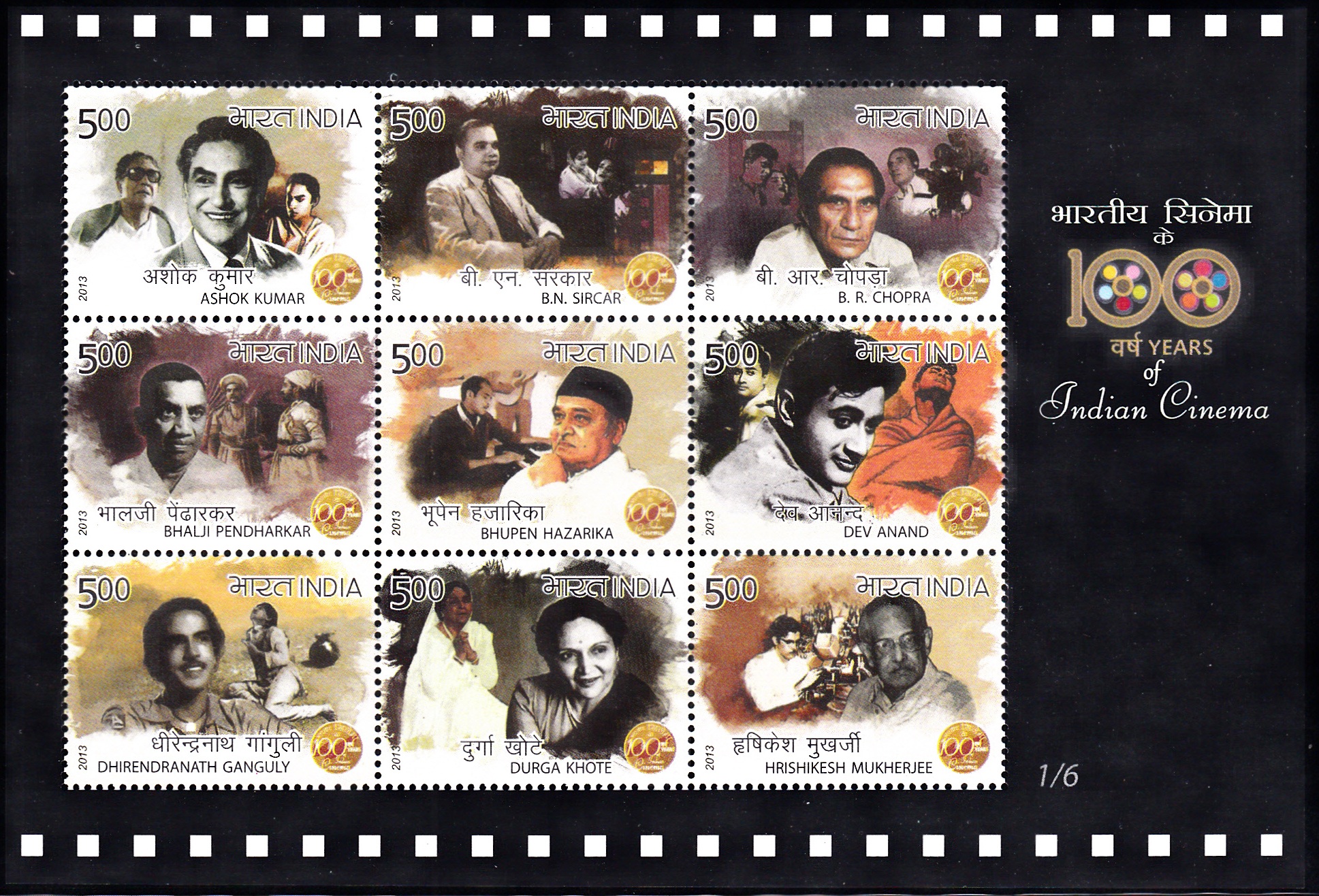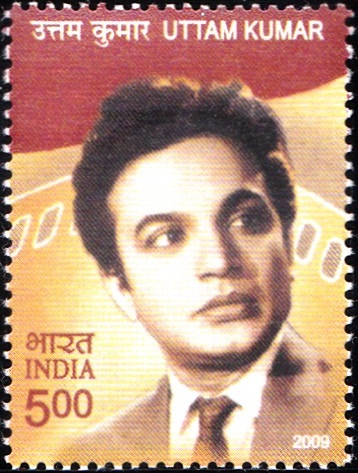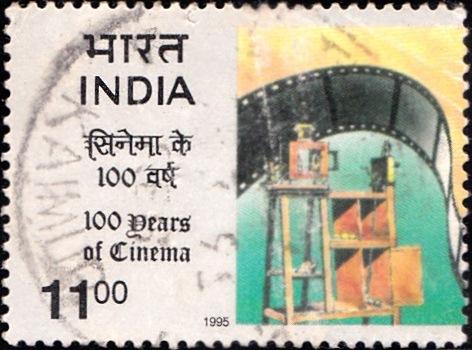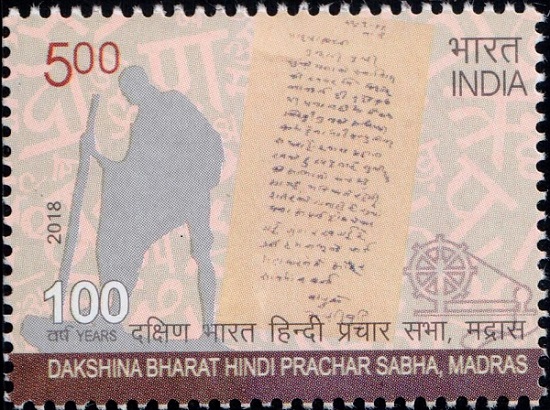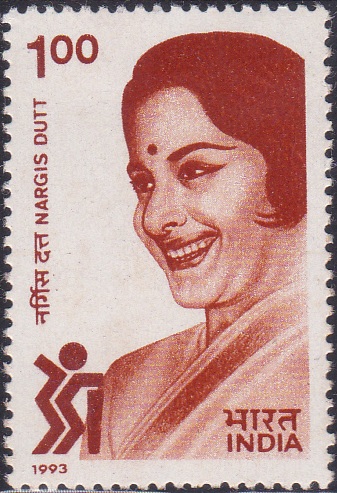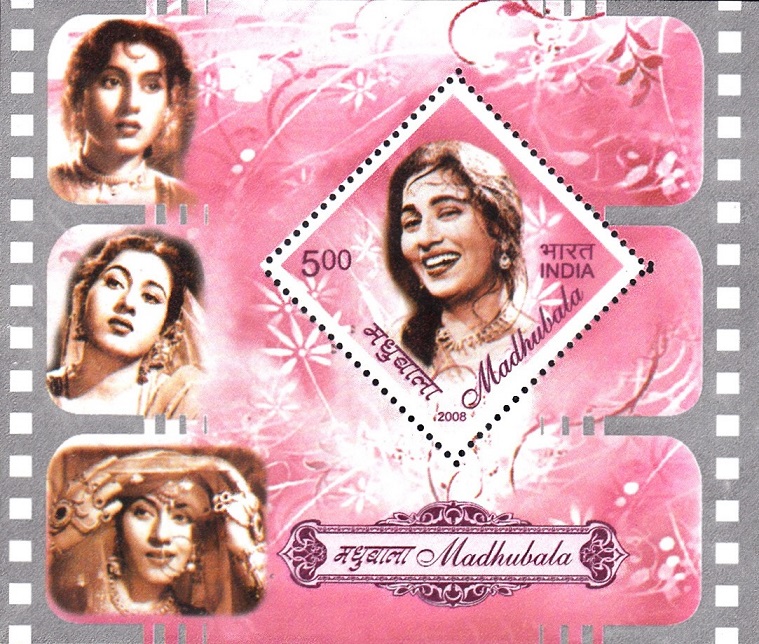
Madhubala
A Miniature Sheet consisting of 1 no. of commemorative postage stamp on Madhubala, an Bollywood Film Actress :
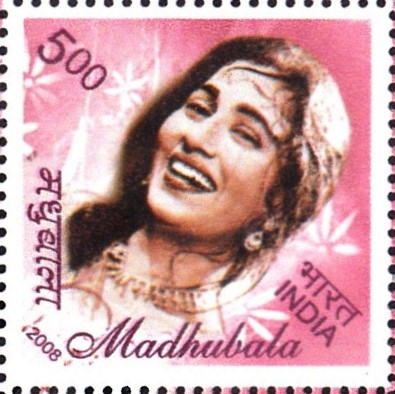
 Issued by India
Issued by India
Issued on Mar 18, 2008
Issued for : Madhubala‘s legend lives on and the Department of Posts is privileged to issue a commemorative stamp on Madhubala, one of the most enduring legends of Hindi cinematic history.
Credits :
Stamp & FDC : Sankha Samant
Cancellation : Alka Sharma
Type : Miniature Sheet, Mint Condition
Colour : Multi colour
Denomination : 500 paise
Stamps Printed : 0.4 Million
Miniature Sheets : 0.2 Million
Printing Process : Photogravure
Printer : India Security Press, Nasik
Name : Mumtaz Jehan Begum Dehlavi
Born on Feb 14, 1933 at Delhi, India
Died on Feb 23, 1969 at Mumbai, India
About :
- Often referred to as the “Venus of the Indian screen“, Madhubala was one of the earliest Hindi cinema actresses, alongwith her contemporaries Nutan and Nargis, to acquire a cult status amongst moviegoers. Her evocative beauty and her prodigious talent combined to give her a mass magnetic appeal, which has so endured through the last thirty years, that she was voted the most popular actress of all-time in Hindi cinema recently. The tremendous range and diversity of her roles marked Madhubala as arguably the most consummate artist of her times, whether it was in her natural flair for comedy in movies like Mr. and Mrs. 55, or in the classical tragic overtones of her character of Anarkali in Mughal-e-Azam.
- Born Mumtaz Begum Jehan Dehlavi on February 14, 1933 in Delhi, she entered the world of films at the tender age of nine, acting in several films as child artist where her acting potential was noticed by the celebrated Devika Rani Roerich who rechristened her as Madhubala. While her big break came in Kidar Sharma‘s Neel Kamal (1947), at the very young age of thirteen, it was her haunting performance as the ghost-spirit in Kamal Amrohi‘s Mahal (1949) that catapulted Madhubala into a big cine star. The cult song from this slick suspense-thriller, “Aayega Aane Wala“, has gone down in Hindi movie history as the defining moment to celebrate Madhubala‘s ethereal beauty besides becoming the signature song of Lata Mangeshkar‘s iconic playback singing.
- The decade of the 1950’s saw her at her versatile best, whether as the conventionally fair lady in Amiya Chakravorthy‘s “Badal” (1951) or as the village belle in Tarana (1951) who falls in love with a doctor stranded in her village, a role played by Dilip Kumar, with whom she formed a great on-screen romantic pair. It was her great spontaneity and comic timing in Guru Dutt‘s “Mr. and Mrs. 55“, which saw her evolve and mature as an actress. It was this same flair for comedy which saw Madhubala at her exquisite best in “Chalti ka naam gadi” (1958) paired opposite singer-actor Kishore Kumar whom she married in 1960. The stunning visuals of Madhubala in yet another cult song picturized on her, “Ek ladki Bheegi Bhagi Si“, from this movie epitomize, as it were, her alluring beauty and her tremendous range of histrionics. Her versatility was at its best in her two other major hits of the year, the role of the club dancer in “Howrah Bridge” with Ashok Kumar and the crusading journalist in “Kaala Pani” with Dev Anand.
- However, her best was still yet to be… 1960 marked a watershed moment of Hindi cinema with the release of K. Asif‘s historical opus “Mughal–e–Azam“, with Madhubala in the pivotal lead-role of the courtesan Anarkali. While the tedious shooting schedules exacerbated her health condition, as she had been diagnosed with a hole in her heart, her acting talent came to the fore and peaked in this period film, based on the classic theme of a Mughal Prince torn between his love and the call to duty and tradition. Madhubala essayed the role to perfection and won serious critical acclaim as well for her portrayal of Anarkali, which immediately set a new benchmark for all such historical roles. A third cult song, “Pyar kiya toh darna kya..“, picturized on her, etches out the tragic dimensions of the character beautifully and seemed to mirror Madhubala‘s own inner emotional struggle with her health condition, even while trying to make the most of life itself.
- Madhubala followed this up with another intense portrayal of a musician’s daughter in love with a poet in the blockbuster “Barsaat ki Raat” (1960), paired with Bharat Bhushan. Her acting skills often underplayed by the media and critics, which largely focused on her ethereal beauty, resulted in extremely sensitive and mature performances, which drew interest from Hollywood even and Frank Capra in particular, who proposed a project with her. Though the project did not materialize and she never worked in Hollywood under family pressure, Theatre Arts, an American magazine, in its August 1952 issue featured Madhubala extensively in an article entitled, “The Biggest Star in the World – And she’s not in Beverly Hills“.
- Her short, brilliant professional career was cut short at the young age of thirty-six as her delicate heart ailment worsened, and she succumbed to her failing health on February 23, 1969. But Madhubala has continued to live in the hearts of millions of Hindi cine-goers with her mystical feminine allure, which has accorded her a cult status amongst fans. A recent biography of Madhubala by Khatija Akbar quotes Dilip Kumar, her co-star and legend himself, paying glowing tribute to Madhubala : “…. Had she lived …. She would have been far superior to her contemporaries … God had gifted her with so many some things …… One of the popular stories about her life has it that a Muslim fakir had visited the house of Madhubala in her childhood and predicted both fame and fortune for her as well as an early untimely death.
- Text By : Pranav Khullar
Subscribe
Login
0 Comments


